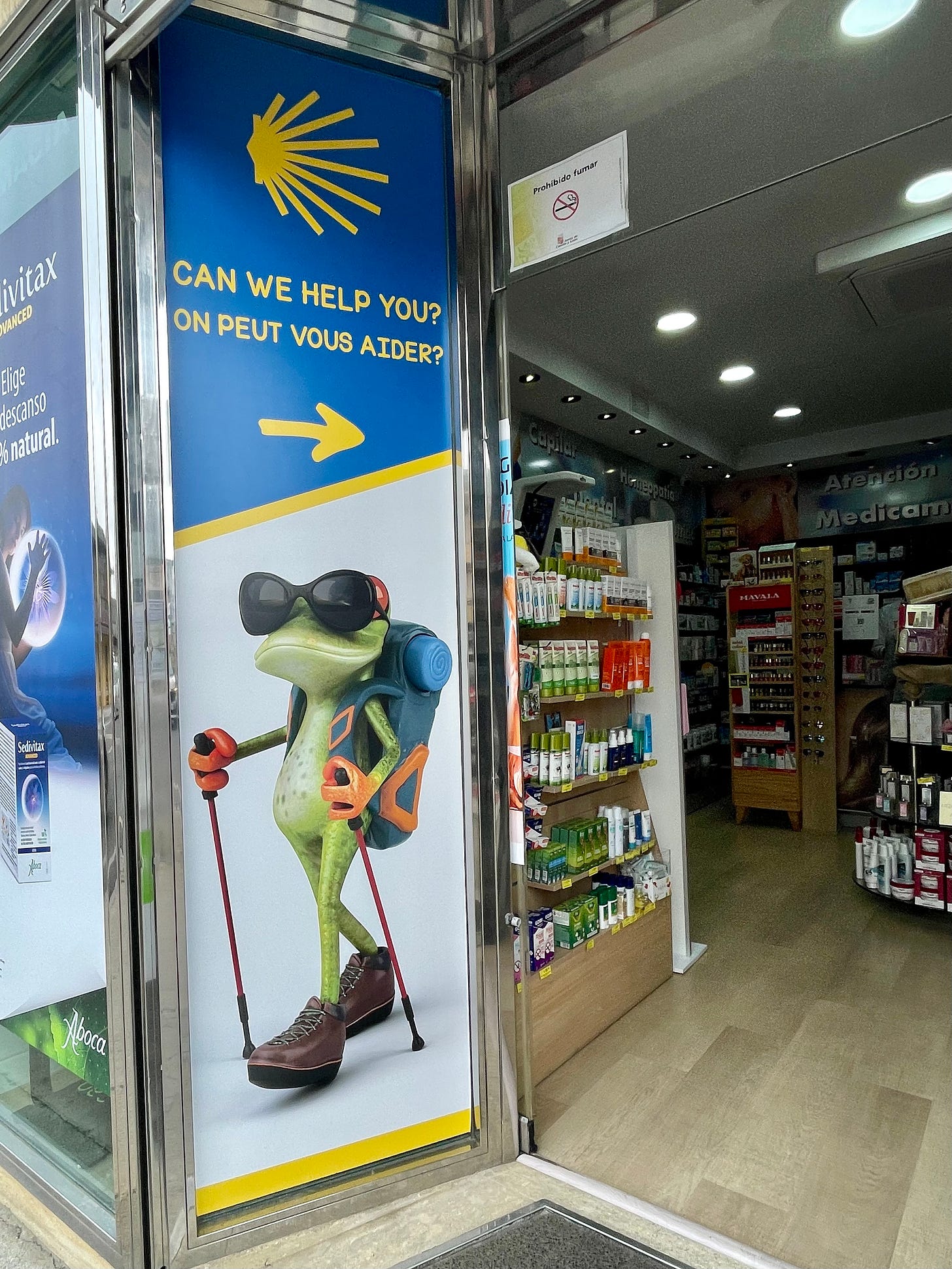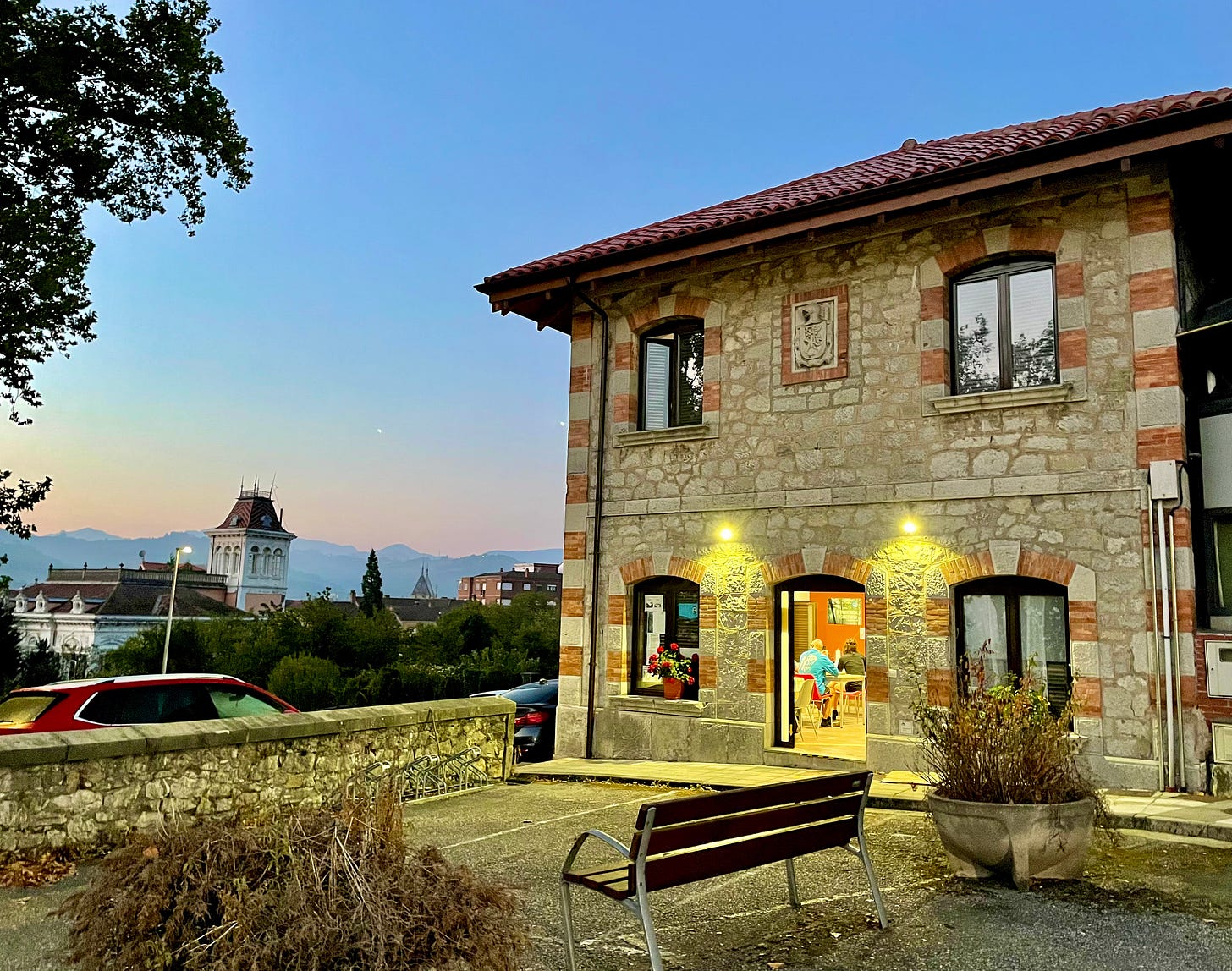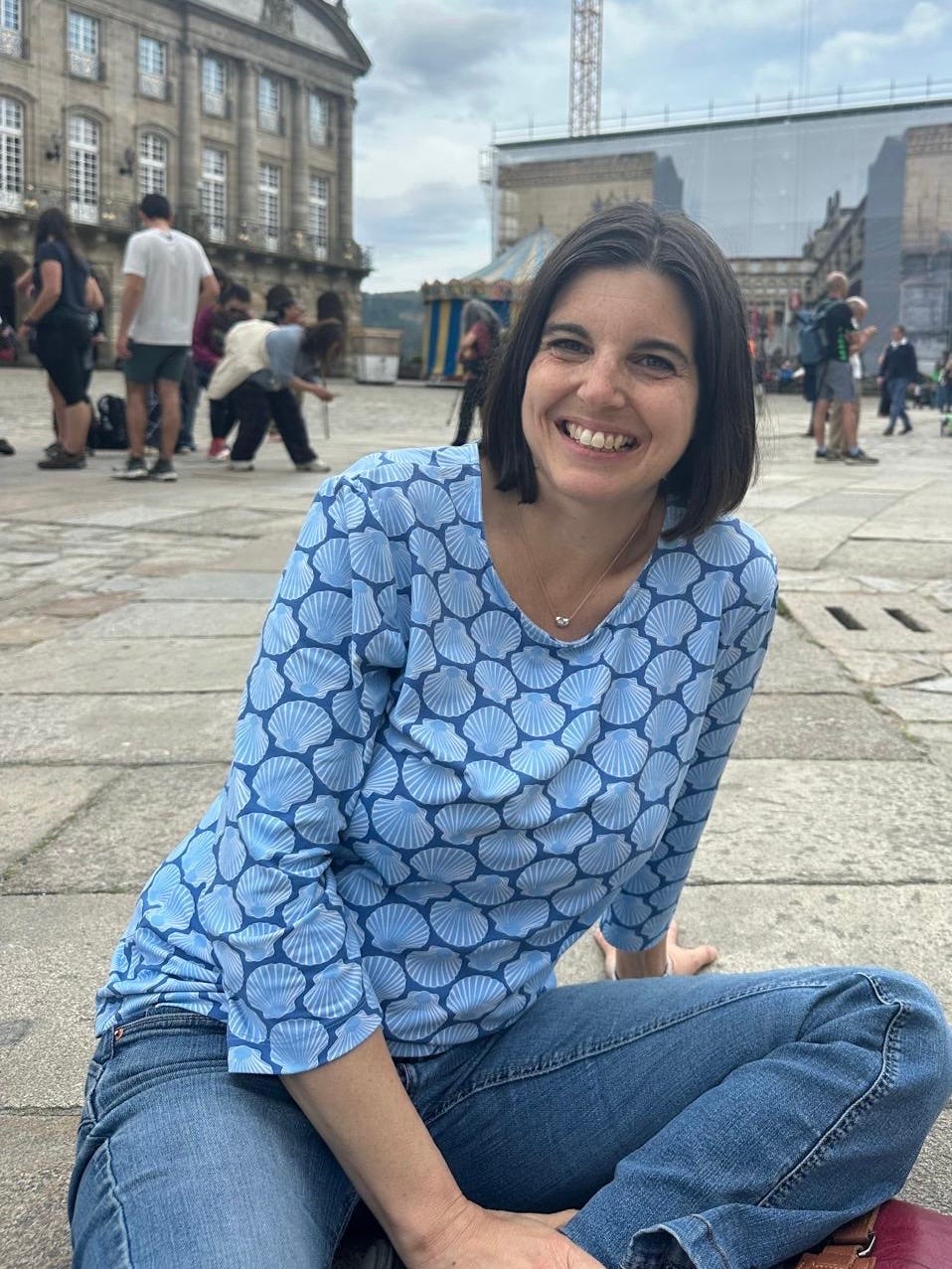038: Is The Camino de Santiago Safe?
How to get help if you need it.
Hello Camino friends! Here’s what’s in this issue:
🆘 “Is The Camino de Santiago Safe?”
➡️Client Spotlight: A Father and Daughter on the Camino
📸Scenes from the Camino
🎥Live interviews about the Camino
📖What I’m Reading
🥾How to get help planning your Camino.
Are you getting my posts directly to your email or Substack feed? If not, click here to join us.
“What’s the Camino?”
❓Not even sure what the Camino de Santiago is? Start here.
🤔Heard of the Camino but not sure if it’s for you? Read this.
Let’s get started!
🆘Is The Camino de Santiago Safe?
On a Facebook group for English speakers interested in walking the Camino, if someone asks, “Is it safe?” I think, “Oh—they must be American.”
It’s a sad but common thing my Camino friends and I agree on: if there’s a question of safety, we’d place money that the person asking is currently living in the United States.
The last school shooting in the US: April 17, 2025.
The last school shooting in Spain: 1979.
Intentional homocides per 100,000 in Spain: 0.7
Intentional homocides per 100,000 in the US : 5.0 (In other words, 7 times more likely in the US than in Spain).
Is there crime on the Camino? Absolutely. Will it happen to you? Probably not. Those of us that have lived in Spain all agree: Statistically speaking, you’re much safer in Spain than you are in the United States.
I don’t want to make light of the fact that there are incidents that happen on the Camino. But enough that I would caution you against doing it? Absolutely not.
For some, the Camino is the first time they’ve traveled to a foreign country. For some, the Camino is the first time they’ve traveled alone. For some, the Camino is the first time they’ve been to a place where English is not widely spoken.
All of this would be scary no matter what country you were going to. But let me tell you a few things that I wish everyone traveling the Camino knew about how to get help:
1. Fellow Pilgrims
The Camino is a walking community of amazing people—don’t ever hesitate to ask for help.
Just ask: If you are on the Camino Portugués or Camino Francés anytime between May and September, if you need help, just start asking and you will find someone. If you find yourself alone on the trail in the morning, just sit down and wait — another pilgrim will come along. Most pilgrims stop walking by 2pm, so if it’s after that time, this may not be your best option.
Speaking English: Though English is not commonly spoken among Spaniards, it is the common language among pilgrims on those routes.
Other routes: If you are traveling a different route, you are still likely to run into English-speaking pilgrims, but maybe not as quickly/commonly depending on the time of year.
2. Official Emergency Channels
112: The emergency number for the entire European Union is 112 (this includes Spain, France, and Portugal). You do not need a local SIM card nor a local service provider — as long as there is a cell signal where you are, it will work.
AlertCops: Download the AlertCops app to your phone. You may not be able to activate it until you get to Spain. Once you set it up, if you or someone near you needs help, you click a button on the app, and help will arrive.
3. Medical Help
Farmacias (pharmacies): If you are in a town, pharmacies have longer opening hours than the health centers — and many of the towns on Camino routes are not big enough to have a health center, but do have a pharmacy. Pharmacists along the Camino know common pilgrim ailments very well.
Centro de Salud (health center) - Towns of 5000+ people will have a health center and some of those health centers are staffed 24/7 for emergencies. If they aren’t, call 112 for any emergency.
4. Albergues
Donativo: The volunteers who run the donativo albergues (donation-based hostels) along the Camino routes are used to dealing with injured pilgrims. Even if you aren’t staying in the hostel, do stop by and they are often very willing to help direct you to the right place. Sometimes the volunteers are multi-lingual as well.
Municipal or Private: The town employees or private families who run the other albergues (hostels) on the Camino are also well-versed in pilgrim needs. You may need a translation app if you don’t know how to speak Spanish.
5. Locals
I’ll never forget the time I got lost trying to make my way out of León on the Camino Francés. Knowing hardly Spanish back then, I said, “Perdon?” to a woman in hospital scrubs and then, with a quizzical look on my face, “Camino?”
She started to explain, but then just indicated with a swish of her hand that I should follow her. She walked at least a few minutes in the opposite direction she was headed to be sure she got me back on the trail.
Do not expect every Spaniard to have the time to help you. But it’s amazing how helpful people are if you just ask.
—
Prevention and preparation go a long way. My recommendations:
Carry a card with you listing two emergency contacts, their phone numbers with country codes, all medications you are on, and any medical conditions you have. Have Spanish on one side, English on the other. Laminate it at your local office supply store and make sure those around you know where it is.
Download the AlertCops app.
Download any app that has location services (e.g. Buen Camino) and be sure to have cellular coverage on your phone while abroad.
Learn some Spanish. Especially know how to say any medical conditions you have.
I’ve walked over a dozen Caminos at this point. I’ve been helped my pharmacists, doctors, fellow pilgrims, and total strangers. Don’t let fear stop you from living your dreams.
With love,
Rebecca
➡️Client Spotlight:
John Camp was going to do his Camino alone, but when his 16-year-old daughter Lily said she’d like to join him, he jumped at the chance to have this time and experience with her. I was honored to help them plan their trip. Read their story here.
Know someone else who’d love to learn more about the Camino de Santiago? Please share this post!
📸Scenes from the Camino
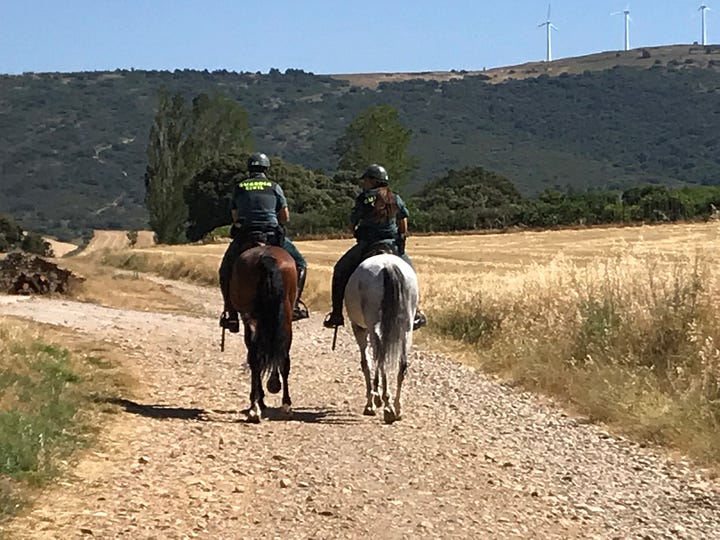
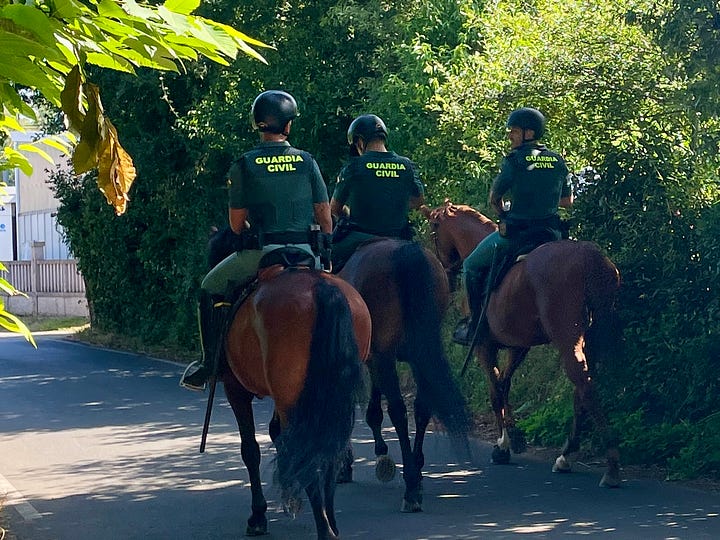
What concerns do you have about doing the Camino? (I’ll answer them in an upcoming post or video!)
🎥Join me for live interviews here on Substack!
Wednesday, Nov 12: I’m taking this week off—one of my sisters got married yesterday, so I’m taking the time to visit family in NY this week.
Wednesday, Nov. 19, 11-11:45 ET: Debbie Bartolomucci walked over 500 miles on the Camino Francés. She spent 38 days on the trail and says next time she’d go ever slower—join us to find out why!
📖What I’m Reading
This week I’m reading Atul Gawande’s Being Mortal which “shows that the ultimate goal is not a good death but a good life—all the way to the very end.” It came highly recommended by my friend Lauri Palko. I’ve just started, but am very much liking the message so far.
🥾Ready to start planning your Camino?
Rebecca Weston
Camino Planning & Preparation Guide (for People 45+)
Rebecca@TheCaminoCalls.com
Your Camino adventure should feel exciting, not stressful — here are some ways I can help you get ready:
Watch Camino Conversations for practical tips and advice from my guests who have done the Camino (or more than one!).
🗓️ Camino Planning Session (60 min): Get answers to your top questions and a notes doc created during our call.
📞 Full Camino Experience: 6 coaching calls with detailed notes to plan your trip with confidence and ease.
🥾 Walk With Rebecca: 7-day hybrid Camino walks — 3 days guided, 4 days independent, private rooms, preparation classes, and optional check-ins. Click here to be the first to be notified about my next trip.Rebecca Weston is an American who walked her first Camino in 2012.
About me: I’ve walked more than a dozen Caminos since my first in 2012. I’ve spent many days volunteering along the trail, and if I’m not walking one now, I’m planning the next—and would love nothing more than to help you plan yours, too. Originally from the US, my husband and I live in a town of 6500 people on the Camino del Norte.


